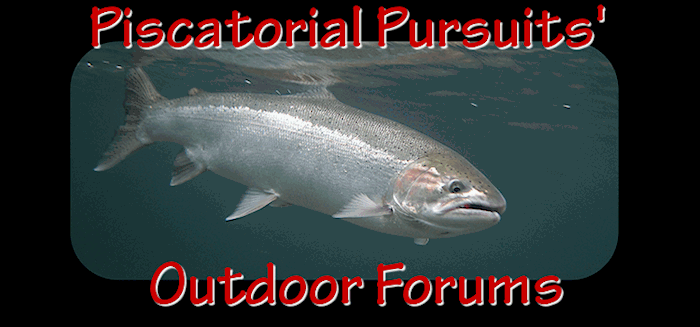No offense but out of all the talked about factors contributing to low steelhead returns I think "habitat loss" is the most overblown out of all of them. Washington state still has numerous rivers out on the OP which sport the same habitat quality as they did 200 years ago and yet their current returns are just as bad as the rest of the state. Then you look back 40 years ago to the 1980's when Puget Sound steelheading was at its peak. It didn't seem to matter back then what rivers had poor habitat because the Green and Puyallup were pumping out more fish than anywhere else and those are some of the most urbanized rivers in PS.
"Fishing" on the other hand still seems to be pretty prevalent. Between commercial fishermen, the tribes, and pinnipeds you have the three most productive groups of fisherman who all get a crack at these fish in whatever manner they please. They don't worry about what has a fin or not because its all fair game to them. On top of that we commercially fish for all the baitfish out in the ocean limiting what the salmon can eat in the first place.
I will say that recreational fishing on the other hand probably hasn't caused much damage in recent years largely in part because we haven't been given a chance. With all the emergency closures and 1-fish limits of hatchery only fish its hard to make a dent when you aren't given the chance to kill anything. Out of all the groups of fisherman out there I would definitely say that we are the least to blame.
Denham,
You're not the only one who thinks the "habitat factor" is over blown. But you and those who do are wrong. Understanding steelhead population abundance requires acceptance and understanding that multiple factors are in play. You can likely walk and chew gum at the same time, so you can probably understand that more than one factor affects population abundance. This would be somewhat like multiple regression, where the factors influencing abundance are ranked in order of magnitude of the respective effects.
The reason habitat ranks at the top is because when habitat productivity and capacity are reduced by 80 to 90%, there really aren't that many fish being produced for other factors like fishing to rank very high in impact. Of course they can have a significant impact on the small population that remains, but that is a very different story, and near term, compared to the historical context of abundance going back about 200 years.
You say that WA still has numerous rivers out on the OP that have the same habitat quality as they did 200 years ago. Please, for my and everyone else's benefit here, name one. Just one. Because I don't know of one single OP river whose salmonid productivity and capacity has not been severely compromised.
When you refer to steelheading being at its peak in the 1980s, you're talking about a mix of hatchery and wild steelhead, which was a contemporary abundance that was only a shadow of historical abundance. You seem to be wearing blinders that only allow you to see a fraction of the larger picture. Also during the 80s, it looks like many wild steelhead populations were enjoying smolt to adult survival rates of about 5%. Today some of the populations can't even maintain one per cent. That's an 80% loss of what was already only 20% of historical abundance. That leaves only 4% of historical abundance, which pretty well explains why steelhead runs are currently so dismal.
While fishing is prevalent - relatively, but it used to be far more prevalent - the catching of steelhead is a tiny fraction of former run sizes. You refer to the Green and Puyallup as producing lots of steelhead in the 80s despite their poor habitat. I contend that if you count wild steelhead only, they were producing no more than 20% of their historical abundances, and likely a lot less. (Mud Mtn. Dam on the White and Howard Hanson on the Green had and continue to have major impacts on wild steelhead populations.) What you seem to think of as being pretty good steelhead production was actually very severely compromised production, compared to what historically existed.













 Previous Topic
Previous Topic Index
Index


